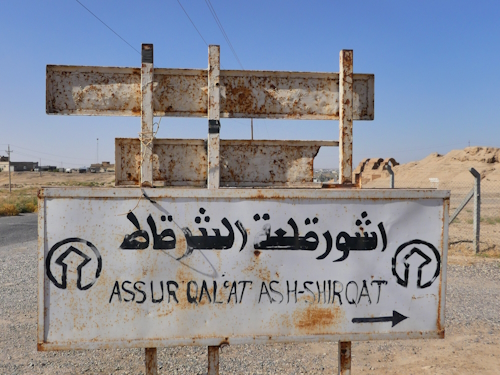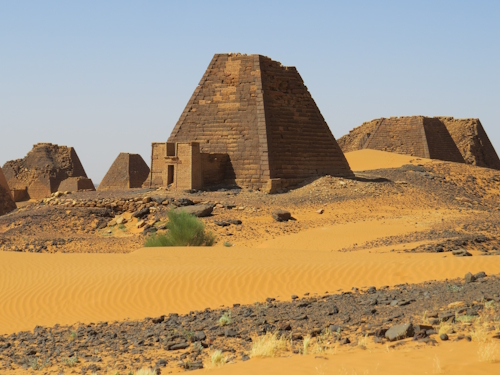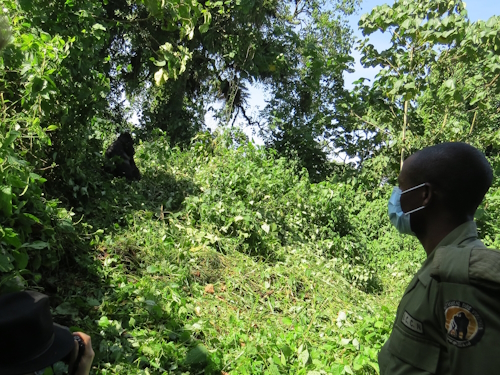Quick Access
1205 of 1223 WHS have been reviewed by our community.
Oporto
2Flow2 United States - 18-Mar-25

Oporto! March 2025 visit. I think my expectations for this city were a bit too high. It's certainly nice and you won't regret visiting here, but in my opinion the experience wasn't mind-blowing. You can easily see all of the most important sites within one and a half days in the city and feel content. In general, everything is colorful and covered in tilework ("azulejos"). It's a city that pictures well, especially in the sun. Everything worth seeing is all in the city's center and can be walked to – no need for public or private transportation.
Read OnCueva de las Manos
J_neveryes Canada - 20-Mar-25

My review will cover how we visited Cueva de las Manos from the south and also provide an update on the ticket price situation. We visited the prehistoric site in March 2025.
El Chalten to Gobernador Gregores: Light rain causes detour
Our visit to southern Patagonia started in El Calafate, where we rented a compact car (automatic drive) for five days at the cost of 416,688 Argentinian pesos, which was $549.86 Canadian (or approximately $383 USD). We decided to rent a car because bus tickets around Patagonia were very expensive. For example, a return bus ticket between El Calafate and the town of (not the glacier) Perito Moreno would have cost as much as a whopping $728 Canadian (or approximately $508 USD) for the two of us.
Read OnMeteora
CugelVance Germany - 15-Mar-25

Visit: march the 14 and 15th,2025
Meteora is a first-class whs which plays in the top of the league.I visited all 7 monasteries ( 6 inside and one only from outside )
But first things first: on the 14th of march I took an ktel bus from Thessaloniki early in the morning to Kalampaka via Trikala where I arrived around 13.15.
I went straight to the tourist information office to get a map of the area. However, I accidentally walked into a travel agency, Meteora Travel. Well, I got a map from them and an offer for a so-called sunset tour at 3 p.m. and a hiking tour at 8 a.m. for the following day. Each tour for 35€, combined 60€.
Read OnBunce Island (T)
Mihai Dascalu Romania - 17-Mar-25

I am now on a Lupine tour in March 2025. Even though it was not on the schedule, five of us payed extra to get here and we're taken there by Bassie from Lupine West Africa +232 76 947442. From Freetown it is more than an hour on a speedboat (what the locals call a speedboat, just a bigger dingy with a Honda engine). You go up on Sierra Leone River, passing by the ferry loading, passing by a railroad that ends up half way above the river and it is used by Chinese to load the iron ore. Then passing by Tasso Island, much bigger and full of locals.
Read OnSan Juan de Ulua (T)
Little Lauren Travels USA - 16-Mar-25
In search of UNESCO sites, I have certainly visited more Spanish and Portuguese forts than any sane person would. And there’s not much unique about this one. However, it is similar to many enlisted properties and it was very historically important. To be exact, this is the oldest Spanish fort in North America (started in 1535) and was one of the most important during the colonial era, since Veracruz was the main seaport connecting Central America and Spain during the colonial era. Therefore I give this a thumbs up as a nomination. Given the revamped listing in 2022, I could see Mexico moving forward with a nomination
Read OnBlog Travel in general
Travel Windows of Opportunity
I have been thinking lately about “Windows of Opportunity”, and whether they truly exist in a travel planning context. Windows of Opportunity are circumstances that suddenly present themselves and that may not happen again – so you need to react promptly to take advantage. This could be because an armed conflict ends or travel bans get lifted. For example: after the recent regime change in Syria, the Ancient Villages of Northern Syria have become accessible for the first time in about 14 years (trips to Serjella and Al-Bara are advertised). And a first international group visited North Korea in February 2025 after 5 years of Covid-closure.
I wonder however what these opportunities across a lifetime of WH Travel really mean. Should you go to Syria now in 2025 and put yourself on the waitlist for North Korea?

Windows of countries and sites
With the recent reopening of North Korea, every country is theoretically visitable again (though getting a tourist visa to Sudan or Niger may be tough). (Un)fortunately, as WH Travellers we need to get much deeper into a country than a border or a capital, so certainly not every WHS is visitable at the moment.
To gain an understanding of the impact of country and site "closures", let’s have a look at a few examples from the US naughty list:
- Iraq: Tourism to Iraq in general has almost always continued over the past difficult decades, but the numbers were mostly in Iraqi Kurdistan and at the Shia holy sites. Most WHS were off-limits during the US-led invasion of 2003 and its ISIS aftermath as they were right in the battle zones (it must be noted that 4 out of the 6 were only inscribed after 2003, so they wouldn’t have featured in WH travel plans anyway). Hatra and Ashur (Photo 1, credits to Clyde) took the longest to reopen; take a look again at how Thomas and Wojciech did it in 2021.
- Libya: The Libyan Civil War started in 2011, afterwards tourism hasn’t really returned although you can get in again since 2021, first on business visas and now on an erratic tourist visa process. All WHS are accessible, even the one in East Libya.
- North Korea: Group tours to its WHS were common until Covid hit (2020) and are expected to restart soon (though the border town that reopened in February 2025 unexpectedly closed again in March, according to Koryo Tours).
- Sudan: It has been on the US list since 2011, but its WHS have only been practically impossible to visit since the start of the Sudanese Civil War in 2023. It was a fairly mainstream destination before that (Photo 2 shows its excellent WHS of Meroë).
- Syria: The Civil War started in 2011; in 2015, “Iranian religious tourism was all that remained” (source). However, Damascus has always stayed open and in late 2016, many areas came back under central government control; 5 out of the 6 WHS have been visitable since, mostly on group tours, and, as mentioned above, in 2025, all can be done.
- Yemen: The WHS of Socotra and Shibam are accessible and have been so for years. Sanaa and other inland sites have been off-limits since the Houthi takeover in 2014.
And at some notorious single WHS:
- Afghanistan, notably the Minaret of Jam: located in a Taliban hotbed and probably unvisited by outsiders between 2001 and 2021.
- Democratic Republic of Congo, notably Virunga NP (Photo 3): The park is actually well-managed and has a good tourist infrastructure, but it lies in a highly flammable region with the presence of armed militia in and near the park, leading to frequent closures since its relaunch for tourism in 2014.
- Mali, Tomb of Askia: The area around Gao has had security issues since at least 2012 (it was even sketchy before), but Tripadvisor reviews show that people still trickled in until 2019.

A need to act immediately or FOMO?
What we can learn from these examples is that inaccessibility caused by armed conflict and security issues generally doesn’t last for more than 5-10 years. Wars will eventually end, and tourist facilities are often quickly restored to their former glory, as everybody loves hard currency. Individual WHS, though, may stay out of reach for 10-20 years.
So I consider these not as true “Windows of Opportunity” as they do not generally open for a short period only. They are more like cyclic events with rather unpredictable timelines. You can be sure to get several of those opportunities during a travel life, even for countries with a problematic history. You can look at the Ancient Villages of Northern Syria from the perspective of “they have been inaccessible for 14 years”, but they have been open for 36 years as well during the past 50 years. 50 of our community members managed to visit during those earlier years.
Psychologically, the unpredictability of it all, the fear of “the window might close again on short notice”, pushes travellers into thinking these are once-in-a-lifetime opportunities. Hypes on social media strongly contribute to this FOMO.

But keep in mind: When a country or region reopens after conflict, what will you encounter? Some people like to feel the optimism, witness history firsthand, or are lovers of Dark Tourism (seeing ruined cities, tanks left by the roadside, etc). But – especially keeping WHS in mind - how good will your visit be? The site may have been damaged during the war, may not have had its regular maintenance for years, site interpretation may have faded away, and the contents of the site museum are still packed away in boxes: it is probably not at its best.
My take on this is that I plan my trips in the order of the most appealing to me first. If a site I am especially attracted to has an “open window”, I will try to use it (as I did with Virunga). But I'd rather wait for Sanaa and a full Yemen trip being possible than rush to Shibam. There’s no harm in waiting a couple of years or even for the next cycle: the visitor experience may be much better.
Do you immediately act upon perceived Travel Windows of Opportunity?
Els - 30 March 2025
Comments
Wojciech Fedoruk 2 April 2025
Visiting sites after their reopening has its appeal. I like to be one of the first in the country recovering from disasters, to help them recover faster and to avoid crowds. But for some countries there is a risk that something will go wrong as the procedures are not set. Decision is taken balancing those two factors.